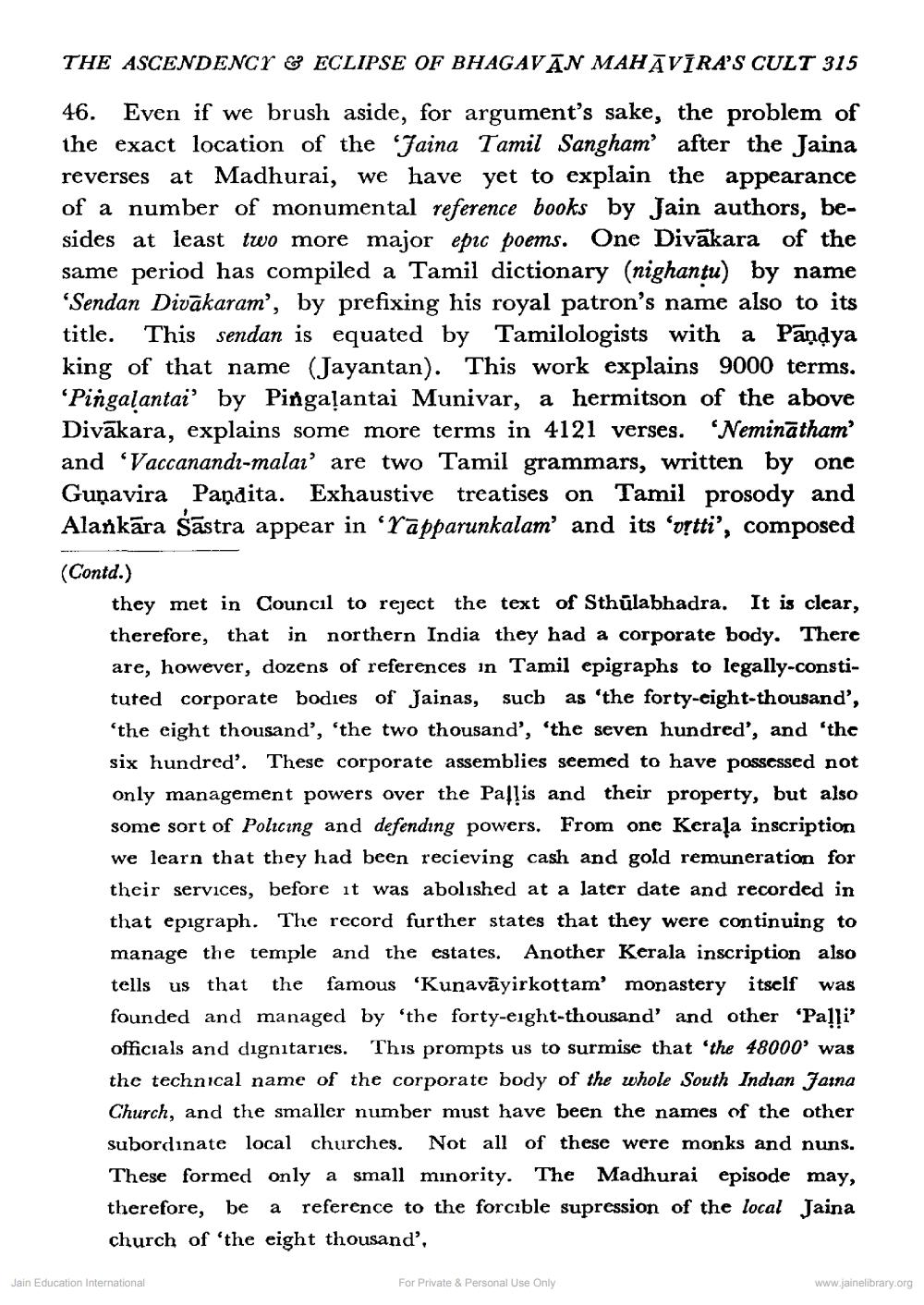________________
THE ASCENDENCY & ECLIPSE OF BHAGAVĀN MAHĀVĪRA'S CULT 315
46. Even if we brush aside, for argument's sake, the problem of the exact location of the Jaina Tamil Sangham' after the Jaina reverses at Madhurai, we have yet to explain the appearance of a number of monumental reference books by Jain authors, besides at least two more major epic poems. One Divākara of the same period has compiled a Tamil dictionary (nighantu) by name Sendan Divākaram', by prefixing his royal patron's name also to its title. This sendan is equated by Tamilologists with a Pandya king of that name (Jayantan). This work explains 9000 terms. 'Pingalantai' by Pingaļantai Munivar, a hermitson of the above Divākara, explains some more terms in 4121 verses. “Neminātham and "Vaccanandi-malar' are two Tamil grammars, written by one Guņavira Pandita. Exhaustive treatises on Tamil prosody and Alaskāra Šāstra appear in 'rapparunkalam' and its ortti', composed
(Contd.)
they met in Council to reject the text of Sthūlabhadra. It is clear, therefore, that in northern India they had a corporate body. There are, however, dozens of references in Tamil epigraphs to legally-constituted corporate bodies of Jainas, such as 'the forty-eight-thousand', ‘the cight thousand', 'the two thousand', 'the seven hundred', and 'the six hundred'. These corporate assemblies seemed to have possessed not only management powers over the Pallis and their property, but also some sort of Policing and defending powers. From one Kerala inscription we learn that they had been recieving cash and gold remuneration for their services, before it was abolished at a later date and recorded in that epigraph. The record further states that they were continuing to manage the temple and the estates. Another Kerala inscription also tells us that the famous 'Kunavāyirkottam' monastery itself was founded and managed by the forty-eight-thousand' and other 'Palli' officials and dignitaries. This prompts us to surmise that 'the 48000' was the technical name of the corporate body of the whole South Indian Jaina Church, and the smaller number must have been the names of the other subordinate local churches. Not all of these were monks and nuns. These formed only a small minority. The Madhurai episode may, therefore, be a reference to the forcible supression of the local Jaina church of 'the eight thousand,
Jain Education International
For Private & Personal Use Only
www.jainelibrary.org




